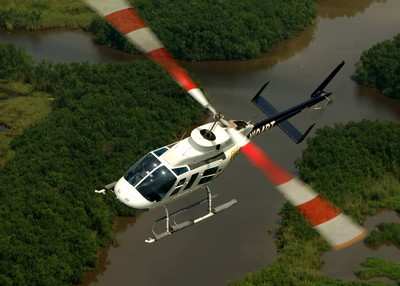Mon, Nov 21, 2022
AD 2022-22-08 Requires A Repetitive Inspection For Delamination...
The FAA is adopting a new airworthiness directive (AD) for Bell Textron Canada Limited (type certificate previously held by Bell Helicopter Textron Canada Limited) Model 206L, 206L-1, 206L-3, and 206L-4 helicopters with a certain part-numbered main rotor (M/R) blade installed under Supplemental Type Certificate (STC) SR02684LA.

This AD was prompted by delamination of M/R blades. This AD requires a repetitive inspection for delamination, and depending on the results, removing the M/R blade from service and reporting certain information. The FAA is issuing this AD to address the unsafe condition on these products. This AD is effective December 23, 2022.
Supplementary Information: The FAA issued a notice of proposed rulemaking (NPRM) to amend 14 CFR part 39 by adding an AD that would apply to Bell Textron Canada Limited Model 206L, 206L-1, 206L-3, and 206L-4 helicopters with a certain part-numbered M/R blade installed under STC SR02684LA. The NPRM published in the Federal Register on March 24, 2022 (87 FR 16652). The NPRM was prompted by testing by Van Horn Aviation, LLC (Van Horn), which revealed the potential for delamination in M/R blade part number (P/N) 20633000-101. Delaminations were then confirmed by inspection of in-service M/R blades. Testing by Van Horn confirmed that the 90° plies fail in spanwise tension (normal to the fiber direction) at the inboard end of the weight receptacle near M/R blade station 186.0. Delamination then propagates outboard from M/R blade station 186.0 at the interface between the 0° and 90° plies. According to Van Horn, fatigue testing has shown that the delamination initiates almost immediately and
progresses slowly in a stable, predictable manner. The delamination has been found to develop first on the lower surface and grow outboard from the inboard end of the weight receptacle and forward of the balance weight pocket. After approximately 4 to 6 inches growth of the delamination on the lower surface, a similar delamination becomes detectable on the M/R blade upper surface. Should the delaminations continue to grow to the point of static overload, the receptacle could depart the M/R blade. In the NPRM, the FAA proposed to require, at specified intervals, removing the affected M/R blade, drawing rectangular inspection areas “Zone 1” and “Zone 2” with a permanent marker, tap inspecting the inspection areas for delamination, marking and measuring the length of any delamination, and depending on the results, removing the M/R blade from service. The NPRM also proposed to require reporting certain information to Van Horn. The FAA is issuing this AD to address the unsafe condition
on these products.
More News
Takeoff Roll The process whereby an aircraft is aligned with the runway centerline and the aircraft is moving with the intent to take off. For helicopters, this pertains to the act>[...]
“We’re proud of the hard work that went into receiving this validation, and it will be a welcome relief to our customers in the European Union. We couldn’t be mor>[...]
"Aircraft Spruce is pleased to announce the acquisition of the parts distribution operations of Wag-Aero. Wag-Aero was founded in the 1960’s by Dick and Bobbie Wagner in the >[...]
IDENT Feature The special feature in the Air Traffic Control Radar Beacon System (ATCRBS) equipment. It is used to immediately distinguish one displayed beacon target from other be>[...]
Aero Linx: Pararescue Air Force Pararescuemen, also known as PJs, are the only DoD elite combat forces specifically organized, trained, equipped, and postured to conduct full spect>[...]
 ANN's Daily Aero-Term (05.10.24): Takeoff Roll
ANN's Daily Aero-Term (05.10.24): Takeoff Roll Aero-News: Quote of the Day (05.10.24)
Aero-News: Quote of the Day (05.10.24) Aero-News: Quote of the Day (05.11.24)
Aero-News: Quote of the Day (05.11.24) ANN's Daily Aero-Term (05.11.24): IDENT Feature
ANN's Daily Aero-Term (05.11.24): IDENT Feature ANN's Daily Aero-Linx (05.11.24)
ANN's Daily Aero-Linx (05.11.24)



